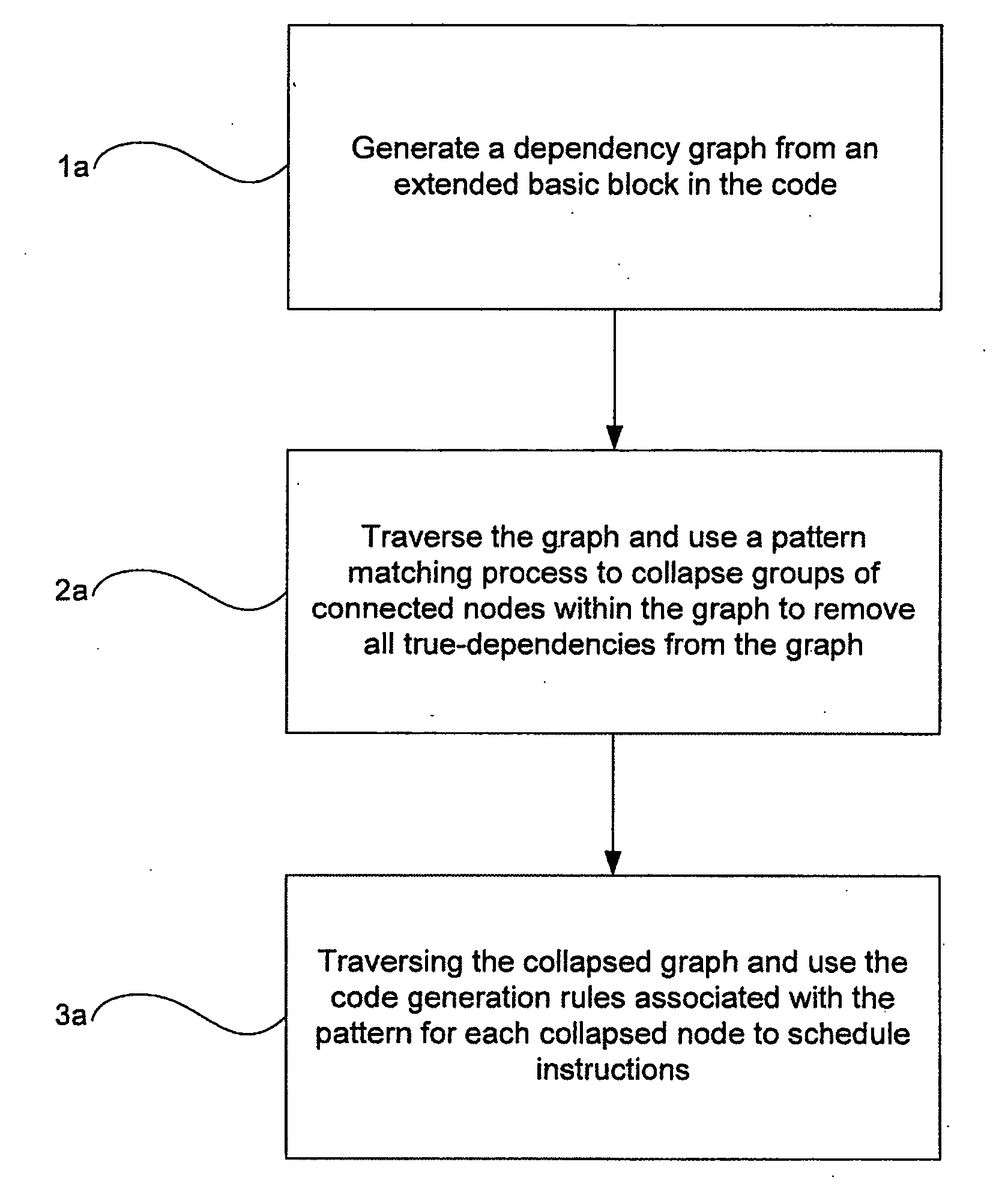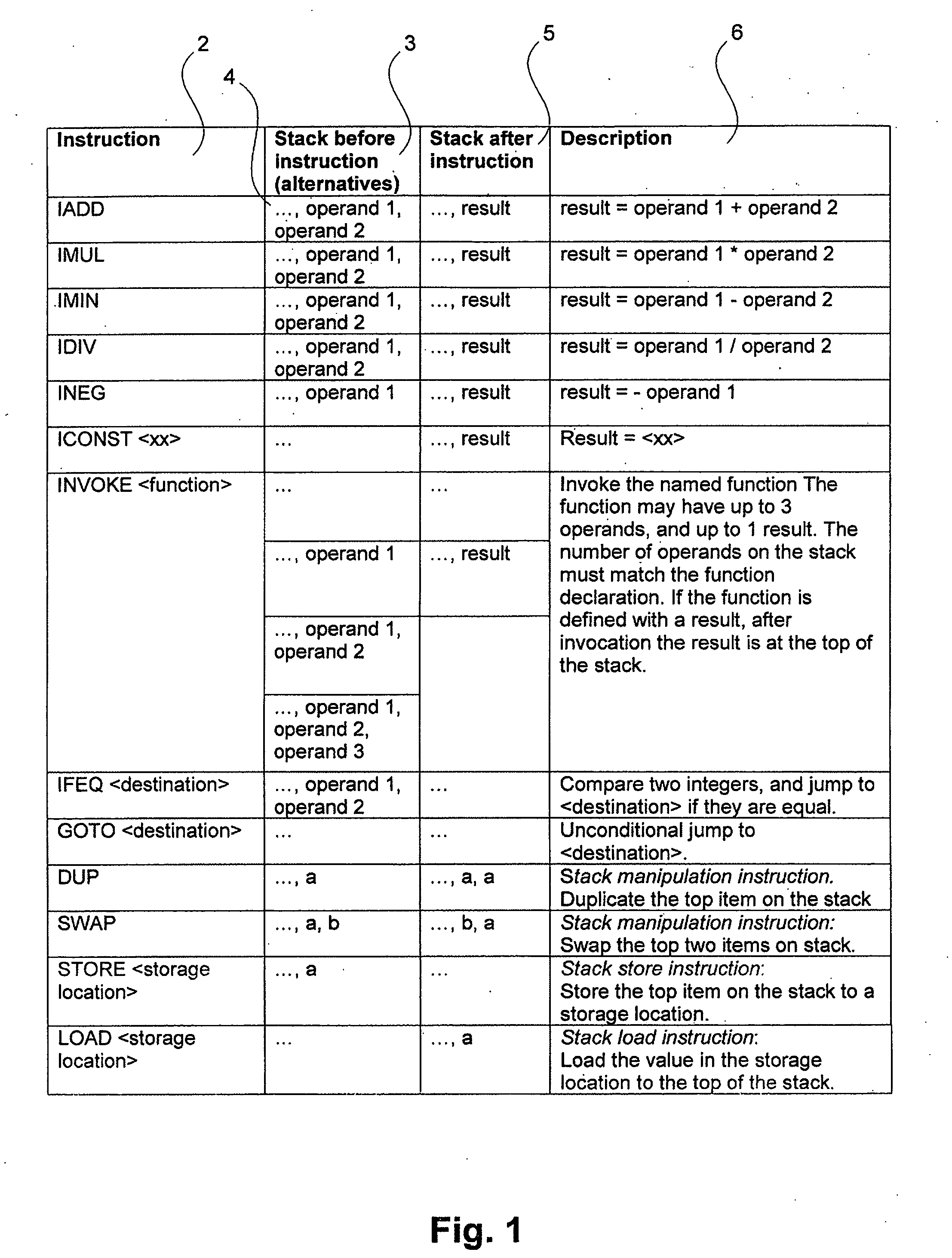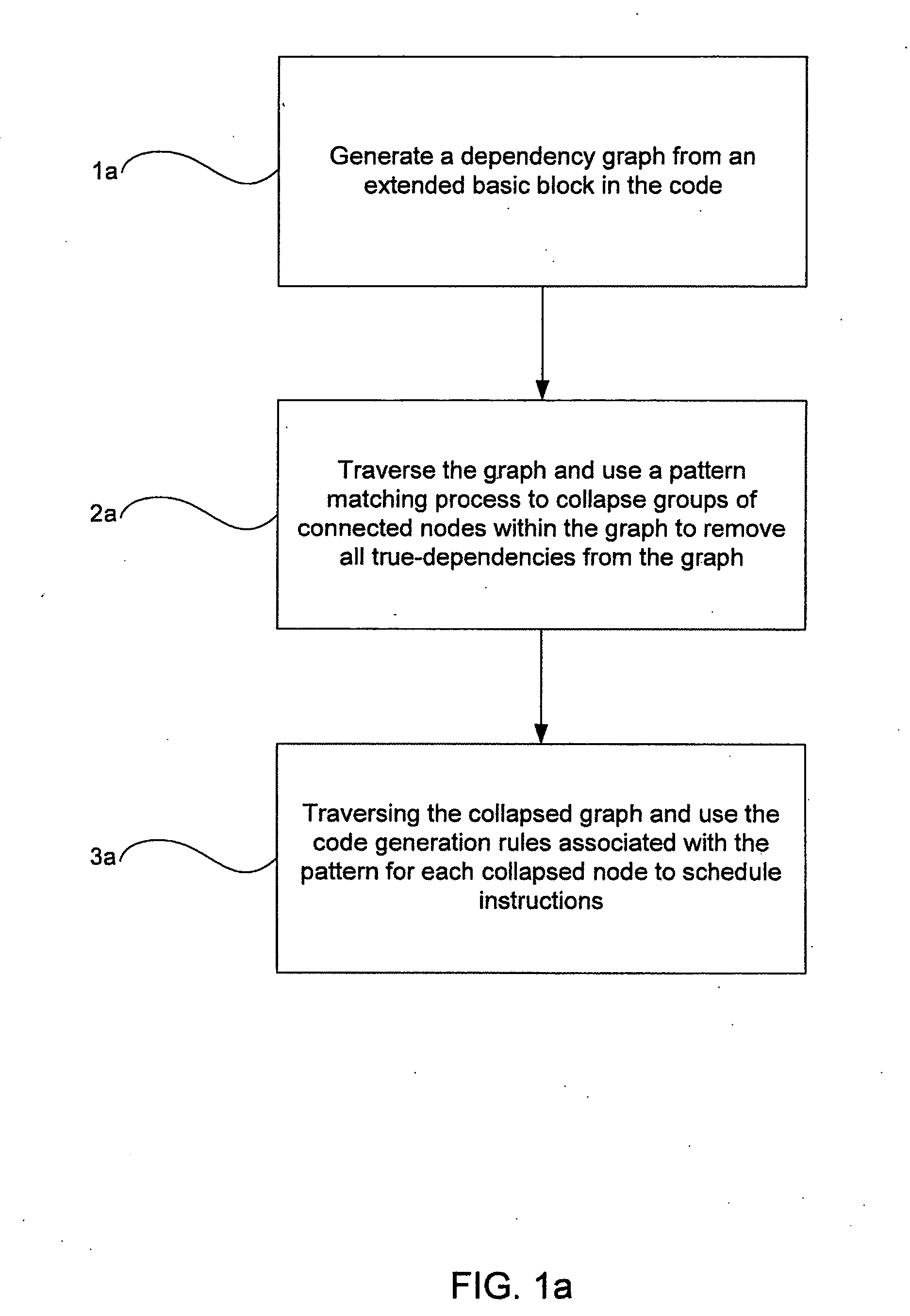Method of generating optimised stack code
a stack code and optimization technology, applied in the direction of program code transformation, program control, instruments, etc., can solve the problems of comparatively little research on stack-based optimization, the method does not work with a directed acyclic graph or directed graph, and the awkwardness of directly optimizing stack cod
- Summary
- Abstract
- Description
- Claims
- Application Information
AI Technical Summary
Benefits of technology
Problems solved by technology
Method used
Image
Examples
Embodiment Construction
[0067] The present invention will be described in relation to a method of generating optimised stack code for a stack-based machine from a register-based representation of the code.
[0068] It will be appreciated that the method may be implemented within optimisers or compilers.
[0069] The advantage of the method of the present invention is the production of compact and efficient code for stack based machines from a register based representation.
[0070] The method will decide for each expression whether the result of that expression is required to be stored in the general store area, and what stack manipulation instructions, stack store instructions and stack load instructions are required to be inserted.
[0071] The method of the invention makes efficient use of the characteristics of a stack-based machine and the particular set of stack manipulation instructions available on a particular stack-based machine, by generating code with “minimal” number of stack store instructions, stack...
PUM
 Login to View More
Login to View More Abstract
Description
Claims
Application Information
 Login to View More
Login to View More - R&D
- Intellectual Property
- Life Sciences
- Materials
- Tech Scout
- Unparalleled Data Quality
- Higher Quality Content
- 60% Fewer Hallucinations
Browse by: Latest US Patents, China's latest patents, Technical Efficacy Thesaurus, Application Domain, Technology Topic, Popular Technical Reports.
© 2025 PatSnap. All rights reserved.Legal|Privacy policy|Modern Slavery Act Transparency Statement|Sitemap|About US| Contact US: help@patsnap.com



